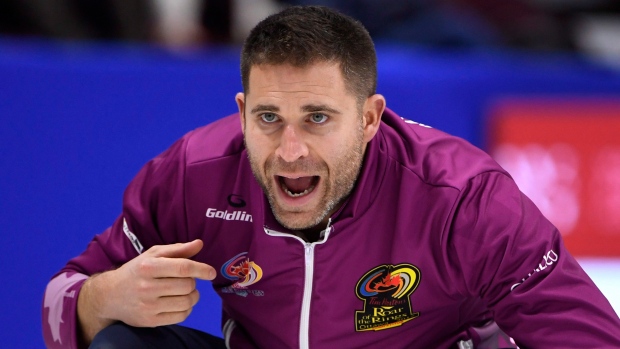Dec 12, 2017
Mixed doubles gives curling more Olympic time to shine
A day and a half before the torch is lit and more than 12 hours before any Olympian slips into a ski or skate, the 2018 Winter Games officially will begin when the first stones are thrown in the new discipline of mixed doubles curling.
The Canadian Press

A day and a half before the torch is lit and more than 12 hours before any Olympian slips into a ski or skate, the 2018 Winter Games officially will begin when the first stones are thrown in the new discipline of mixed doubles curling.
The inaugural Olympic event involving a young but fast-growing offshoot of the 600-year-old sport gives curlers another chance to participate in Pyeongchang and perhaps earn a medal. For curling's caretakers, it is an opportunity to capitalize on a spotlight that shines on the sport once every four years.
"We're trying to have more moments in the sun," World Curling Federation President Kate Caithness said. "And we're very excited about it."
With mixed doubles making its debut in South Korea as a third medal event, curling will now run from Feb. 8 — the day before the opening ceremony — and every day until the torch is snuffed. The very first event of the Pyeongchang Games is a mixed doubles match between the United States and Russia.
"I don't know if people will even be there that early," said Tabitha Peterson, who is on the American women's curling team and is attempting to qualify for mixed doubles this week at the U.S. trials in Blaine, Minnesota.
"Hopefully we get a big crowd out there," she said. "That would be amazing to play in front of a crowd like that, when the only thing out there would be curling."
Although widely played in Scotland, Canada and parts of Northern Europe, curling primarily attracts the attention of the American public once every four years, when the banging rocks and furious sweeping prove to be one of the biggest TV draws of the Olympics.
"Curling's always been kind of a cult following," said Peterson's teammate, Joe Polo, who won a bronze medal in 2006 and is an alternate on the U.S. men's team this year. "Everybody loves curling for a couple of weeks every four years. That's one of the great things about it: The Olympics just kind of brings it to another level."
And this Olympics has added a level on top of that.
Though mixed curling had long been more of a social sport, the international governing body responded to the IOC's push for more coed competition by putting mixed doubles on a fast track. It was approved for the Winter Games in 2015, just seven years after the first mixed doubles world championship, giving it an instant boost.
"Young people love it, and we've got to look to the future," Caithness said in a telephone interview from an Olympic qualification event in Pilsen, Czech Republic. "Our sport's become so much more professional now, but it's still a sport for all. It's social, and mixed doubles is part of that."
Though the scoring and basic strategy is the same — teams earn points by placing their stones closest to the centre of a target, called the house — mixed doubles differs from traditional curling in more than just the gender of the teammates.
In the coed game, teams of two throw a total of five rocks over each of eight ends (think baseball innings, or bowling frames) instead of teams of four throwing eight in each of 10 ends. There are also two pre-positioned stones on the ice — one in the house and the other in front of it, as a guard— that add to the strategy.
In mixed, one player will throw either first and last or the middle three stones; sometimes the teammates will switch roles in a single match. Men's and women's teams have more of a defined throwing order — lead, second, third and skip — that doesn't change.
Because there are only two players on a team, that also means more sweeping and more trips up and down the ice. And each player has to be more involved in the decision-making: The endless options for every shot give curling the nickname "chess on ice."
"You only have two brains vs. four brains to think about strategy," said Peterson, who is the vice skip of the American women's team led by Nina Roth. "But, on the flip side, there's less people to butt heads with, or disagree on shots. I love my women's team; it's always fun to play with a group of ladies. But it's great to change things up."
While some national federations decided that players couldn't compete in both single-gender and mixed curling, the U.S. will allow players to cross over. (Mixed curling ends the day before the men's and women's events begin.)
In all, seven of the 10 members of the men's and women's teams that already have qualified for the Olympics will be in the Twin Cities suburbs this week in an attempt to make it in a second event; nine others have one last shot to make it to Pyeongchang.
For Polo, making it in mixed doubles would guarantee him a chance to throw rocks once he gets there.
"I want to go and compete, and not just be riding the pine," he said.
And being part of the inaugural event would make it even better.
"I think I can speak for Tab, too," Polo said. "She wants to be the first lady to compete in both disciplines, and I want to be the first guy."
